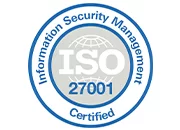Introduction:
Are you struggling to keep your fleet operations running smoothly? With rising customer expectations and increasing competition, managing logistics can feel like an uphill battle. But what if you could harness logistics software development to streamline your fleet management? In this blog, we’ll uncover how innovative solutions can transform your operations, making them more efficient and cost-effective.
Fleet Tracking Systems
Fleet tracking systems are a cornerstone of modern logistics management, enabling businesses to monitor their vehicles in real time. This technology has evolved significantly, providing logistics managers with tools that enhance visibility and operational efficiency.
Overview of Fleet Tracking Technology
Fleet tracking technology typically involves GPS systems combined with software platforms that display vehicle locations, routes, and statuses. These systems allow logistics companies to track their fleet’s movements on maps, providing insights into vehicle performance and driver behavior.
Benefits of Real-Time Tracking
Real-time tracking offers numerous benefits for fleet management:
- Enhanced Visibility: Managers can see where each vehicle is at any moment, allowing for better decision-making and route adjustments.
- Increased Accountability: Drivers know they are being monitored, which can lead to improved performance and adherence to schedules.
- Cost Savings: By optimizing routes based on real-time data, companies can reduce fuel consumption and wear on vehicles.
Key Features to Look for in a Fleet Tracking System
When selecting a fleet tracking system, consider these essential features:
- Geofencing Capabilities: Set virtual boundaries to receive alerts when vehicles enter or leave designated areas.
- Driver Behavior Monitoring: Track metrics like speed, braking, and acceleration to promote safe driving practices.
- Maintenance Alerts: Automated reminders for vehicle servicing can prevent costly breakdowns and extend vehicle lifespan.
Incorporating an effective fleet tracking system through logistics software development can significantly enhance your operational efficiency, enabling better fleet management.
Delivery Automation Software
Delivery automation software is another critical component of logistics operations, designed to streamline the process of fulfilling orders and ensuring timely deliveries.
Definition and Purpose of Delivery Automation
Delivery automation refers to the use of software solutions to manage and optimize the delivery process. This includes everything from order processing to route planning and customer notifications. By automating these tasks, businesses can reduce manual errors and improve overall efficiency.
Impact on Delivery Times and Customer Satisfaction
The implementation of delivery automation software can lead to substantial improvements in delivery times. Faster deliveries not only enhance customer satisfaction but also strengthen brand loyalty. Here’s how:
- Faster Order Processing: Automation speeds up order entry, reducing the time between order placement and shipment.
- Optimized Routing: Advanced algorithms analyze traffic patterns and delivery locations to create the most efficient routes.
- Improved Communication: Automated notifications keep customers informed about their order status, leading to better experiences.
Essential Components of Effective Delivery Automation Software
To maximize the benefits of delivery automation, look for software that includes:
- Real-Time Tracking: Allow customers to track their deliveries in real time, increasing transparency.
- Dynamic Routing: Adjust routes on the fly based on changing conditions such as traffic or weather.
- Integration with Other Systems: Ensure compatibility with existing inventory and customer relationship management (CRM) systems for seamless operations.
By adopting delivery automation software through logistics software development, companies can significantly enhance their operational efficiency and customer satisfaction.
Integrating Logistics Software Solutions
Integrating various logistics software solutions is essential for optimal performance and a unified approach to fleet management.
Steps for Successful Integration
To achieve successful integration of logistics software solutions, follow these steps:
- Assess Current Systems: Evaluate existing software and identify what needs to be integrated.
- Set Clear Goals: Define the objectives of integration, such as improving efficiency or reducing costs.
- Choose Compatible Solutions: Select software solutions that can easily communicate with each other, ensuring data flows seamlessly.
Common Challenges and How to Overcome Them
While integration can offer significant benefits, it may also present challenges:
- Data Silos: Different systems may store data separately, leading to inefficiencies. Use middleware to facilitate data sharing.
- User Resistance: Employees may resist changes. Provide training and support to ease the transition.
- Technical Issues: Ensure robust IT support is available to address integration problems swiftly.
Examples of Integrated Software Solutions
Several software solutions in the logistics sector offer integration capabilities:
- TMS and WMS Integration: Combining Transportation Management Systems (TMS) with Warehouse Management Systems (WMS) can streamline operations from order entry to delivery.
- CRM Integration: Linking logistics software with CRM systems ensures that customer data is consistent and accessible, enhancing service quality.
By effectively integrating logistics software solutions, businesses can create a cohesive operational environment that maximizes efficiency and performance.
Future Trends in Logistics Software Development
As the logistics industry continues to evolve, several emerging trends in logistics software development are shaping the future.
AI and Machine Learning in Logistics
Artificial Intelligence (AI) and machine learning are becoming increasingly important in logistics. These technologies enable predictive analytics, which can forecast demand, optimize routes, and improve inventory management. For instance, AI can analyze historical data to predict peak delivery times, allowing for better planning.
The Rise of Predictive Analytics
Predictive analytics is transforming how logistics companies approach decision-making. By leveraging data from various sources, companies can anticipate issues before they arise, such as potential delays or equipment failures. This proactive approach can significantly enhance operational efficiency.
Importance of Mobile Accessibility in Logistics Software
With the rise of remote work and mobile technology, logistics software must be accessible on mobile devices. This enables fleet managers and drivers to receive real-time updates, communicate efficiently, and manage operations from anywhere. Ensuring that logistics software is mobile-friendly can lead to improved responsiveness and agility.
By staying abreast of these trends in logistics software development, companies can position themselves for success in a rapidly changing marketplace.
Conclusion:
In summary, leveraging logistics software development can significantly enhance your fleet management processes, improving efficiency and customer satisfaction. With the right tools, like those offered by WildnetEdge, you can position your business for success in a competitive market. Don’t wait—take the first step toward transforming your logistics operations today!
FAQs
Q1: What are the benefits of fleet tracking systems in logistics?
Fleet tracking systems enhance visibility, improve route optimization, and reduce operational costs, leading to better overall fleet management.
Q2: How can delivery automation software improve customer satisfaction?
Delivery automation software streamlines processes, reduces delivery times, and enhances communication with customers, resulting in higher satisfaction rates.
Q3: What should I consider when integrating logistics software solutions?
Consider compatibility with existing systems, user training, and potential disruptions to operations during the integration process.
Q4: What are the latest trends in logistics software development?
Key trends include the use of AI for predictive analytics, increased mobile accessibility, and the incorporation of IoT devices for real-time data.Q5: How can WildnetEdge help improve my logistics operations?
A5: WildnetEdge offers tailored logistics software solutions designed to enhance efficiency, streamline operations, and ensure scalability for your business.

Nitin Agarwal is a veteran in custom software development. He is fascinated by how software can turn ideas into real-world solutions. With extensive experience designing scalable and efficient systems, he focuses on creating software that delivers tangible results. Nitin enjoys exploring emerging technologies, taking on challenging projects, and mentoring teams to bring ideas to life. He believes that good software is not just about code; it’s about understanding problems and creating value for users. For him, great software combines thoughtful design, clever engineering, and a clear understanding of the problems it’s meant to solve.
 sales@wildnetedge.com
sales@wildnetedge.com +1 (212) 901 8616
+1 (212) 901 8616 +1 (437) 225-7733
+1 (437) 225-7733































